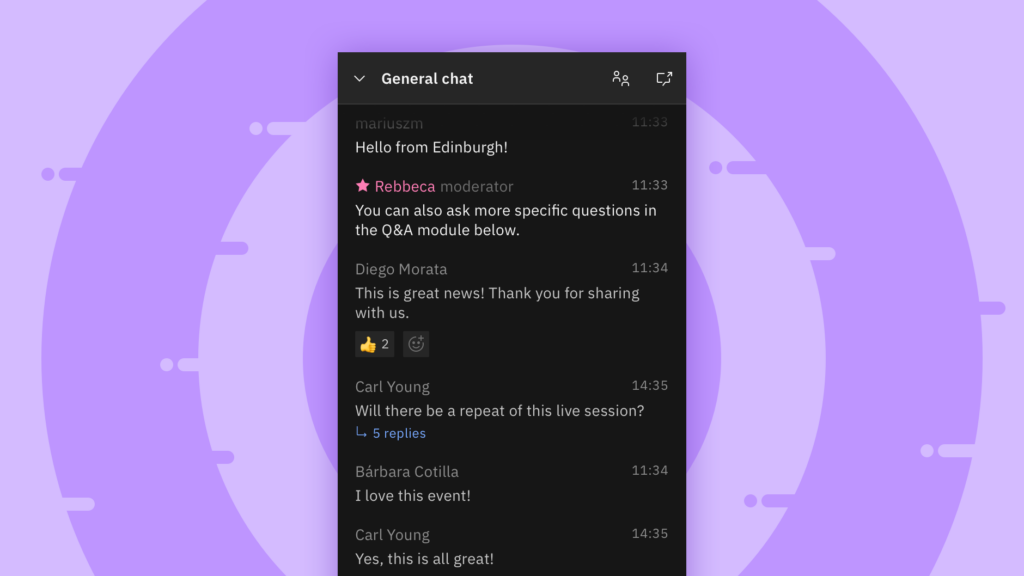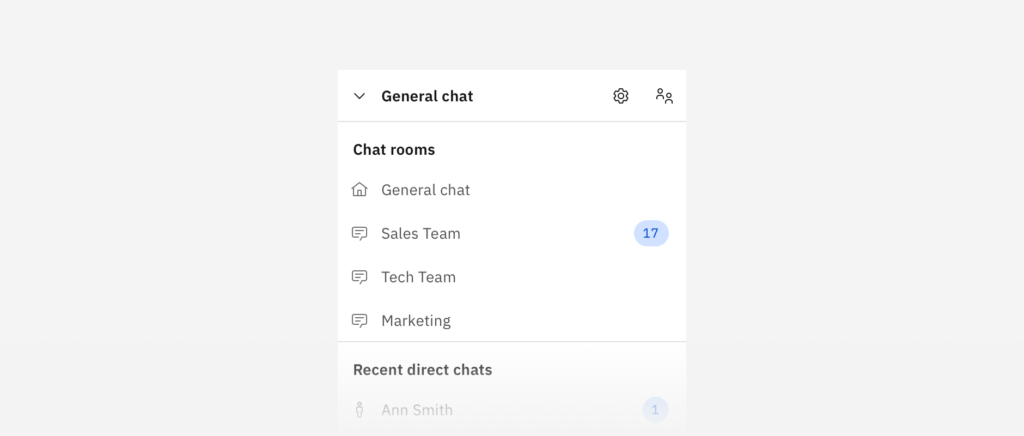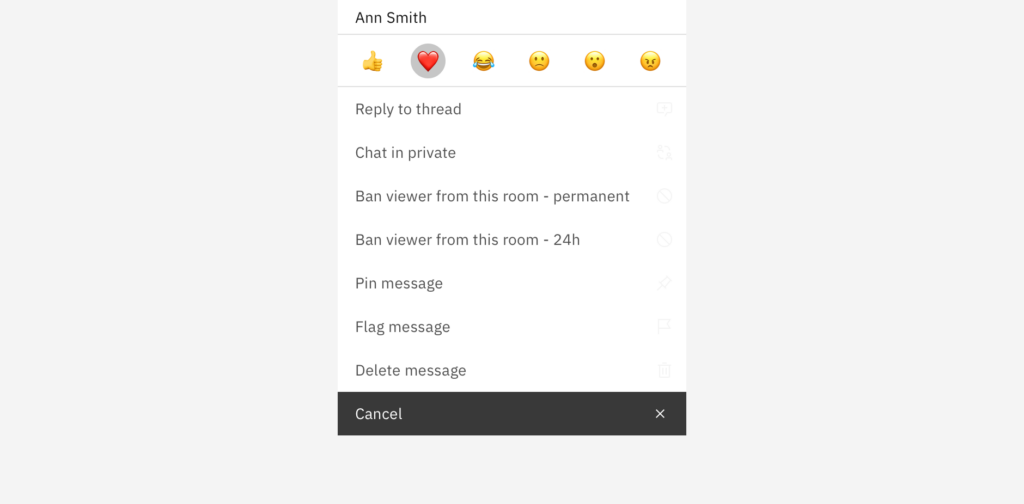
Hosting virtual events has become a practice that many event managers have had to adopt in the wake of the world pivoting to support remote engagement. In addition to providing appealing quality content for viewers, it has become exceedingly important to ensure that viewers also have a way to engage and communicate with others to enhance online experiences for those who would otherwise be connecting with people in person.
As a result, IBM has redesigned the existing chat functionality to provide a new, reliable and scalable performance while offering highly engaging tools that could make the difference for virtual event participants – all while maintaining the core chat feature set that IBM customers have become accustomed to. Below are highlights of the new chat features that customers can start using today.
Emojis
Everyone just loves emojis! When it comes to communicating with people virtually, emojis are a fun way to bring life and personality to messages. In the new IBM Video Streaming chat, emojis are introduced, but in a way that is also not too distracting from the core interaction.

Group chats
Digital events and presentation broadcasts can often cover a wide range of topics that viewers may be interested in. This can be a great solution for events that draw distinctly different sets of attendees. Chat rooms designated for developers to interact can be separated from chat rooms where the operations team is interacting. Multiple group chats can be created ahead of time in the Dashboard. Participants can easily browser chat rooms and switch between conversations they find most interesting.

Files and images in chat
During small or medium focused discussions, moderators or chat participants may want to share images or documents to further support the content covered in the broadcast. The ability for participants to send files and images can be toggled on or off by administrators in the Dashboard. One of the most common use cases for this is sharing the slide deck or “take away” materials at the close of a presentation.
Threads
Having a lot of engagement in chat rooms is great, but can often lead to participants being overwhelmed with many messages sent within just a few seconds of each other. Event managers have the option of enabling the slow mode to help remedy this issue, (by limiting the number of chat messages to one message every 30 seconds) but chat participants could also utilize threads to more directly focus conversations within a single chat room.
Moderator functions
Moderators have a full control over the chat messages set by participants and have the ability to delete messages, and ban individuals (either temporarily or permanently). Moderators also have the ability to pin important chats at the top of the conversation which can be very handy when trying to bring attention to a critical point across a large number of people during an event. Moderators can also enable the slow and pause mode as well as clear the chat, and they now also have the ability to reply to participants within threads or initiate private chats.

Direct chats
Moderators also have the ability to enable or disable the ability for participants to communicate with each other. Allowing participants to message each other directly can enhance digital event experiences by connecting people who they may not have communicated with in an in-person setting. If someone sees that another person is asking engaging questions or provides quality feedback or guidance they may want to connect with that person to share insights and contact information.
Account types
The new video streaming chat feature is available for use across all account types (IBM Enterprise Video Streaming, IBM Video Streaming and IBM Video Streaming Silver, Gold and Platinum editions). With IBM Enterprise Video Streaming accounts, the chat username will pre-populate based on how the participant is authenticated and logged in. However, the individual user has the option to customize how they would like to be identified in the chat rooms. For IBM Video Streaming accounts, if the registration gate is being used, the chat username will also pre-populate. If registration is not being used, the individual user will define a username (nickname) to be used in the chat rooms. Customization of the usernames is another way to make chat interactions fun and engaging.
Chat room data
IBM’s new chat feature produces a complex data set (chatrooms, threads, links, emojis and comments) that can be exported and analyzed by event organizers to gain insights. This data can help teams better understand meaningful chat conversations between large and small groups, overall engagement levels, and can also be used to better understand who audiences are reacting to content being presented using the data about what is being communicated via chat while watching live events. In order to help customers utilize the fullest capabilities of the new chat we have updated the export data to use a .JSON format which is a very common file format and data-interchange format.
Summary
Interactivity features like chat have an incredible way of enhancing digital event experiences for participants. Using IBM’s new chat feature, event managers can moderate and encourage communication among participants by allowing them to directly connect, share files, participate in various chat rooms and start threaded conversations. For more information about new chat, please reach out to us here.